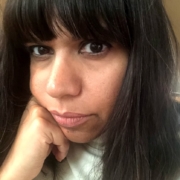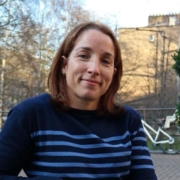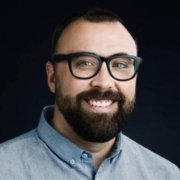Karen Mundy
Planning to Reopen Schools
Karen Mundy
School systems worldwide are struggling to figure out if, when, and how to re-open schools. Educational planning during a pandemic is no easy task, especially when there is little evidence that can be used to guide policy.
My guest today is Karen Mundy, Professor of International and Comparative Education at the University of Toronto. She is a leading expert on education in the developing world and former Chief Technical Officer at the Global Partnership for Education, known as the GPE. I wanted to speak with Karen since part of her job at the GPE was to work through delicate planning issues with government and school officials worldwide. What advice would she give school planners today?
Citation: Mundy, Karen, interview with Will Brehm, FreshEd, 208, podcast audio, July 27, 2020. https://freshedpodcast.com/karenmundy-2/
Will Brehm 1:34
Karen Mundy, welcome back to FreshEd.
Karen Mundy 1:36
Hi, Will and thanks for inviting me during the middle of a pandemic.
Will Brehm 1:40
I know. I hope you are doing well. And it is the topic of discussion today. I mean, there has been this huge conversation happening worldwide pretty much about how to get children back into schools, how to reopen schools. So, I invited you on to talk about some of these larger issues. Since you have, you know, a long career in educational research, but also have practical experience working in education development and planning. So, I guess to start, what do we know at this moment in terms of reopening schools? Like what is the research tell us that that currently exists?
Karen Mundy 2:18
Well, we have a problem. And the problem that we have with this pandemic is that we actually have reasonably limited evidence to rely upon in guiding the decision about reopening schools. And some of the evidence is contradictory. And so, we are in a position where we have to make decisions based on limited and evolving evidence and do our very best with it, and balance very diverse, or different kinds of possible harms, possible risks. So, I guess, backing up I’m not an epidemiologist, I’m not a doctor, and so what I’m going to report to you is based on I guess a kind of frenetic following of the pandemic news, the COVID news from the media. And I have been following very carefully. So, I think one of the things that emerges very clearly is that this virus has less intense effects on those who are younger -the younger generation. Although in the past week, we have learned one important new piece of information about the different levels of effects or transmissibility of the disease through two different age sets. So, zero to about age 10, reasonably less chance of transmitting we think, and above age 10, now we think seem to transmit quite similar to adults. Those are new pieces of information. And other pieces about transmission are evolving really quickly and have changed so much, I think that it’s been quite confusing to the public. So, for example, early on, we thought we should not wear masks. Now, we think we should wear masks. There have been quite a bit of debate over can children wear masks? And what age can they effectively wear masks? Today I listened to a podcast from Sanjay Gupta, the CNN medical reporter, where he went into a daycare center, and he found that all the kids even three- and four-year-olds were able to wear masks pretty consistently. So, we have a big debate about who can wear masks and should they, but we now know at least that we should wear masks. We should be socially distanced. We need ventilation. I mean, these things are much clearer now than they were even a month ago. So, we do know that but what we still do not know really are things like what is the long-term harm caused by the disease? There is some hesitation about the long-term or possible hidden impacts on children. For example, in lung scarring. We have seen these reports of some deaths among children. Very, very small in number. A much lower risk than even, I think the average flu but still a present danger. And then we know that there is a larger effect of the disease on older people. And of course, schools are made out of kids plus a workforce. And that workforce often does include people in the age sets that are more vulnerable, or people with other kinds of immune compromised statuses that that may be more affected. And of course, then do the kids bring it home? That is what every parent is thinking about. And do they add to the viral transmission? Do they? Yes, probably. Maybe with the older ones more than the younger ones. I think the key question is risk has to be evaluated against the extent of community transmission. So, we need to know how much transmission there is in a community to judge the risk of kids being in school, and the risk of them acting as vectors for other clusters and outbreaks. And we also need to know how ready the health system is to receive cases. So, any additional risk of transmission is much higher if ICU beds are not available. If hospital ICU beds are available, then risk is lower because there’s medical opportunities to medically offset some of that risk. So, I think that is about as much as I want to say about the epidemiology. But I want to just again emphasize that the fact that we don’t know so much as we would like about this disease, that we have just very limited and emerging evidence about rates of transmissions in schools and that this evidence is kind of going in different directions, where you see the example of Israel where we have seen widespread transmission in school settings, possibly because they did not do social distancing and they did not deconcentrate classrooms. And then we have, you know, an example like Denmark, almost no transmission traced within schools. And similarly, in some of the Asian countries that are now reporting data. So, we have different kinds of information. We do not know enough, but we probably -now here, I am going to step out on a limb. I think we probably know that where community public health has the virus under control, there are opportunities to safely reopen schools. So, that is what I have concluded from what I have read. It is not completely without risk. But I think we can manage that risk reasonably well where there is low community transmission. That would not be most of the United States. The districts in the United States that are not opening; it is because they do not have community control.
Will Brehm 8:07
It is a really interesting moment if you are an education policymaker or planner because, as you’re saying, decisions have to be made with very limited evidence and knowledge. And it makes me wonder, is there any past experience that decision-makers can draw on? So, we might not have full information about COVID specifically, but has there been past cases that have been similar in effect that might help us guide how we make decisions going forward?
Karen Mundy 8:41
I think that the past experiences that are most relevant and also where we have the most robust evidence really are related to disruptions in schooling and the short-term and longer-term impacts on children. So, we have very, very good and very interesting recent research coming out on past cases, for example, in Pakistan related to the earthquake. We know from a very good study in Argentina where actually labor disruptions forced large scale school closings over a number of years. And we know what happens over both the short term -sort of from the summer slide or learning loss in different contexts- and also over the long term. When a child who has had their education disrupted early on, how does that affect their life chances when they are young adults. So, in both cases, we have some pretty strong data about the harm that is done to children through both learning loss and the loss of some of the other protections that schools offer. So, school feeding, social and emotional health, and so on. So, that side of the risk ledger is actually really well known and pretty well documented. And I think it is for that reason that you are seeing, perhaps even more forthrightly than folks in the education sector proper, coming out with guidance that is urging school systems to reopen. So, you know, an example of this would be, most of the pediatric medical associations in OECD countries have come forward with recommendations that privilege reopening and also suggest some prioritized targets for reopening. So, reopen for the younger children first, both on the basis of their less likely to be severely affected, but also because their needs for direct engagement are more urgent. Open for kids who come from families where there is not the opportunity for, you know, more robust homeschooling, where they need the social protections offered by the school more urgently than sort of kids from more privileged backgrounds. So, you see the medical associations coming in with very, very elaborate but very, very strong recommendations for reopening schools provided that the public-school systems are adequately funded to offer mitigation of risks. And that funding, you can see in even high performing, you know, education systems, high resource systems. [In] my own system Ontario, the ministries of education and the government has not stepped forward to indicate that it will provide that necessary funding. Situation is much more dire in the United States where states budgets – they cannot run on a deficit, and there is absolutely no leeway for district budgets to grow to address these risk mitigation measures that are so needed. And I might add that in fact, reports from the US suggests districts are going to face funding cuts more than 20% and some are already furloughing teachers. So, we are going in exactly the opposite direction that one would hope.
Will Brehm 12:19
What about in low-and-middle-income countries? Would it look different there?
Karen Mundy 12:23
I think, first of all in -again, what probably the variance is yes, it’s important to think what would happen in a low and middle income country based on the degree of transmission, the rates of transmission and the capacity of the health sector to provide medical services so risk is much higher if hospitals and healthcare is not available. And of course, that will be true in low-income countries. Generally, health systems are not robust and cannot as easily respond to a virus -so risk is higher. For this reason, you see countries like Kenya, having announced last week, I believe that it will not reopen schools in this academic year. It simply does not feel it has the ability to manage the risk. Other countries, and I will speak of one that I have been doing a little bit of work in Ghana is moving towards school reopening at the moment based on, you know, their current COVID status, they’re planning to reopen. Two things: there are a few countries where there are large numbers of children out of school, where health systems are extremely weak, and where children rely on schools for social protections especially for school feeding programs, where the tradeoffs on both sides are very intense and very difficult to assess. On the one hand, they are not able to mitigate risks within the school. On the other hand, the risk to the child of not being in school are very high. For this reason, you’d see, for example, some of the UNICEF guidance, weighing heavily on trying to keep those schools open, trying to find low-cost ways of providing some of the protections, you know teaching outside, handwashing systems that are basically buckets of water but with good soap, use of low-cost masks, that sort of thing. You see people trying to find workarounds. So, one thing that is very noticeable if you look across the landscape is that the drivers for reopening are quite different. And sometimes the decision to reopen is a little bit perverse. So, as an example, this week, we are watching in Florida, Governor announcing that all schools should reopen regardless of the fact that there’s a high rate of transmission of COVID happening. There is a really big spike in Florida now, hospital ICUs are full, and so on. And the teachers and others are taking the Governor to court because of a lack of safety. So, that decision was not made, as I have described it with this notion of how do we balance and offset risks and compare harms to the student against those risks and our ability to offset them. So, in the US, you see a lot of that. You see a lot of states or districts opening schools even though they cannot mitigate the risk. On the other hand, you know, you see some places -I would give my province of Ontario as one- where policymakers are rather hesitant about reopening even though the health system is reasonably well prepared, and they’ve already been able to kind of plank the virus down. That is perhaps related more to a sense of overall risk than it is -or some people in my province would say, some advocates would say it is related to an unwillingness to provide the funding needed to open. But sometimes you see the decisions being made, not based on this balance of harms and risks that I have described, and mitigation efforts not being adequately in place.
Will Brehm 16:37
Yeah. It is not just a sort of technical problem that gets, you know, carefully thought through. There is a larger political economy in which sort of these decisions are being made within. It does make me wonder, what you’re sort of describing is, it almost seems like in a perfect scenario, each school will be able to assess risk sort of individually and be able to respond quickly to whatever they’re finding. If there is more cases that are happening -I’ve heard things about like almost individual classes could either suspend, go online if more COVID cases are found without having to shut down the whole school. And so, it just seems like there is a real range of possibilities across countries and within countries as to what reopening might look like. So, it makes me wonder, you know should we be concerned about inequality that is going to emerge from this very reopening process because it is going to affect students so differently? Some students are going to have so much more learning next year than other students who are going to be, you know, where the schools are going to be closed. So, how should we begin to think about inequality going forward?
Karen Mundy 17:49
It is a really good question. I think we would have to start by asking ourselves -we are seven months into a pandemic-, what kinds of inequality has already been reinforced or exaggerated by the initial seven-month educational response to this pandemic. So, what do we know? We already know that children from less privileged backgrounds are much more greatly harmed by the move to online learning by the loss of social and other kinds of protections that schools offer. And there’s really good evidence and data showing this. At the same time, I think there has been a little bit of “magical thinking” worldwide about the role that technology will play. A lot of efforts to use to learning management platforms and to get everybody into online learning. And it was very humbling to see how rapidly that fell apart, even in high resource systems. So, you know in England and in Canada, about more than 30% of kids just did not have access to the internet or to technology on a regular basis that could support them. So, then what do you do? Some developing countries moved much more rapidly to opening what I call low-tech solutions. So, radio and television, but the stark story there is that children from lower-income households often do not have radios and televisions, either. Some estimates in Africa, for example, place less than 50% of kids having access to a radio and or television. So, again even though countries in a way, I think, why did not Ontario, for example, have more use of radio and television, especially for the younger groups, but countries that even tried that just still did not have the reach. There is some interesting new work. I saw a piece come out yesterday, where effective use of cell phones for sort of prompts or text, SMS messaging for prompts and parental engagement have proven to be quite effective in sustaining both learning and engagement in Botswana. So, that was fascinating, and it strikes me that the lesson we learned here is that engaging with parents more fully is very important part of this. It is not just about providing a lot of content; it is about providing the supports to parents so that they can scaffold their kids’ learning. And that becomes more difficult with parents who do not have access to cell phones or are not literate, but it still can be done, and we should pay attention. So, I have just said something about the learning loss and the fact that possibly we did not really have as much of an equity focus in the last seven months, as would have been optimal. Now, what is going to happen in the coming year? First of all, I think the going trend, hashtag on Twitter lately has been about learning pods. So, I think this is going to happen all over the place.
Will Brehm 21:15
So, what are learning pods?
Karen Mundy 21:16
So, upper-middle-class parents decide that regardless if the school reopens even, they will not send their children back into the school because they do not trust that the mitigating measures have been taken, that all risks have been averted. They will group together and hire their own teacher or tutors and sort of create homeschooling pods.
Will Brehm 21:39
It sounds like “shadow education” gone mad.
Karen Mundy 21:41
It sounds like shadow education gone mad. I must admit that I would never have thought how rapidly this would explode. But you know yesterday, for example, a very renowned education economists announced on Twitter that he is thinking about moving to a different province. A province with a very low prevalence rate with his family so that his kids can get back to school in September because he has no confidence in our government here in Ontario. I think you are going to see that all over the place. Anybody I know whose kids were in a private school, found that they could move into online learning very effectively and into synchronous online learning very effectively. Now, this is in rich country contexts. In developing country contexts, where you already have a lot of tutorial, shadow education going on, I think this will expand. Less clear what will happen to more sort of 9 to 5, K-12 private schools, especially low-fee private schools, because those parents, the parents that were sending kids with their one and extra dollar a day they probably won’t be able to afford it. So, I expect to see some migration of kids out of low-fee private schools back into public schools in low and lower-middle-income countries. But it is a very interesting dynamic, very scary, actually. You know, I’m thinking about South Africa, where yesterday I saw a leading educator complain that despite that they have pretty good data on transmission rates and outbreaks among kids in South African schools in the Western Cape that “teachers were blocking return to school and how could they be so illogical? Science tells us”. And in contrary to that, one colleague responded, “but you know, there have been 30 deaths among teachers. So, are they really all wrong?” And of course, my thought was, did they bring the teachers to the table? A very wise epidemiologist in Toronto posted a video yesterday, showing what they do in the hospital so that people feel secure to go to work there every day despite COVID. And explained that the same could be achieved in schools, but it would require bringing health and education, frontline workers together. And that teachers themselves know what routines are possible and not possible under COVID. But until they are fully engaged in really weighing out risks and mitigations themselves, you are really unlikely to get them back into school because they’re afraid. So, this level of deliberation about how to mitigate risks appropriately and doing that effectively is actually an aspect of governance that I think most ministries of education are not so good at.
Will Brehm 24:51
Right. By bringing in all of these different stakeholders together in a deliberative process to come to a consensus together rather than being told from on high what to do.
Karen Mundy 25:04
And that is probably true at a school level, even more so than at the ministry level. So, do school leaders or district leaders have the autonomy and discretion and the resources? I just keep wanting to emphasize that because if central government does not provide the resources for substitute teachers, doesn’t provide the resources for the PPE, and the school cleaning, and the hand sanitation, then it’s a non-starter. And so, governments really have to put those funds out there, and international donors too can help with this, and some are. Some are leaning very heavily into it. I know that both the GPE and the World Bank are restructuring grants to allow for both, you know, some COVID interventions related to technology, but also sanitation and social protection type interventions.
Will Brehm 26:00
So, you have worked with the Global Partnership for Education, or GPE, for quite a few years, and have probably been involved in a lot of difficult conversations when it comes to education planning worldwide in many different countries. What sort of advice would you have for education planners today? Someone trying to figure out how to navigate this very tricky situation we all find ourselves in right now? What would be some tips?
Karen Mundy 26:30
Well, I think we have just covered one of the main tips, which is: you are going to have to make decisions in a context of uncertainty and possible, unexpected change. So, when you make decisions of that kind, of course, you need to use science and data as much as you can. But you also have to realize that there’s some competing values that have to be addressed, and the only way to get people to hang together to trust that your decisions are right is to bring them to the table. So, do not forget to involve teachers and administrators and really thinking through how they can address the problems. And maybe you are going to find some innovation, some leadership among people that you did not expect it from. I was heartwarming to see; you know teachers going out on their bicycles to bring learning kits to kids in various countries. Trying to make sure that they retained some kind of contact with the kids. So, I think bringing them to the table is very important. And just really recognizing that this bridge between health and education is so important in this context. But not so that the health folks will tell the education folks what they can and cannot do, but that the health folks can say, here’s what we think are risk mitigations, do you think those will work in the daily routines of your school, your community and so on. If there’s anything a ministry can do to have clear traffic signals, traffic lights, dashboard, something that allows parents to feel that there’s a good quality of evidence about community transmission, good quality evidence about the ability of the health care system to respond to and mitigate risk of transmission. If they understand very clearly, at what point school might be opened first, and what point might it be closed? What are the safety measures? Communication is everything and do not expect communication hits the mark, the first time out, it has to really be a communication campaign to build back parent’s sense of comfort and, you know sense that the risks have been mitigated. And then, you know perhaps my number one suggestion is really thinking about equity and the long-term harms that the loss of schooling is doing to children, especially the most vulnerable. And it won’t be popular but making sure that you’ve really targeted resources to the most vulnerable populations is very important. So, that probably means reopening schools for those populations providing additional wraparound social supports for those populations. And here I am thinking not only of children from less well-off families, but also children with disabilities. They have to be served. And you know finally, just bring in the communities. People are very, very interested in seeing kids back in school. I do not know a parent who does not want this to happen. And they -first of all, the capacity to support learning and they have ideas about how to deconcentrate schools, which spaces can be used, how can we tap some of the young people to provide peer mentoring or tutoring, wraparound supports for those when school goes online again. These creative ideas, I think the thinking outside the box are very important. You know, what I think is the most astonishing and I wake up and, I take a deep breath every day and think about the fact that this is not the worst pandemic we’re likely to see in my lifetime. So, it is like a trial run of a pandemic. And so, you know, if I were talking to a minister, I would be saying: Are you collecting enough evidence? Are you reflecting on what you are learning? Are you going to be able to build in those lessons into your forward planning for your ministry? Because this is probably not the last time you are going to see a crisis of some kind. And there is possibly an even worse pandemic. So, how we behave during this pandemic, I think it sort of sets the tone for really the resilience of the whole system in the future.
Will Brehm 31:14
Well, Karen Mundy, thank you so much for joining FreshEd. Please come back on later in the Autumn once we know more of how this has actually panned out. So, thanks again for joining.
Karen Mundy 31:25
Thank you. Will. Take care, stay safe.
Want to help translate this show? Please contact info@freshedpodcast.com
Related Author Projects/Publications
Mentioned Resources
The long run effects of teacher strikes: Evidence from Argentina
Human capital accumulation and disasters: Evidence from the Pakistan Earthquake of 2005
How countries are using edtech to support access to remote learning during COVID pandemic
Limiting learning loss using phone-based programming during COVID-19 in Botswana
Low-fee private schools migration to public schools during COVID
Global Partnership for Education (GPE)
National learning platforms and tools
Pandemic pods are here, are you in?
Related Resources
Policy actions for school reopening and learning recovery
COVID and schools: the evidence for reopening safely
Cross-national variation n school reopening measures during the COVID-19 pandemic
School closure, COVID-19 and lunch programme
Audio Now!: Responding to COVID-19
Education during COVID-19 and beyond
The political economy of pandemic pods
Multimedia Resources
How ‘learning pods’ could widen the education gap
Learning pods gain popularity amid pandemic but raises questions over equity
Have any useful resources related to this show? Please send them to info@freshedpodcast.com









